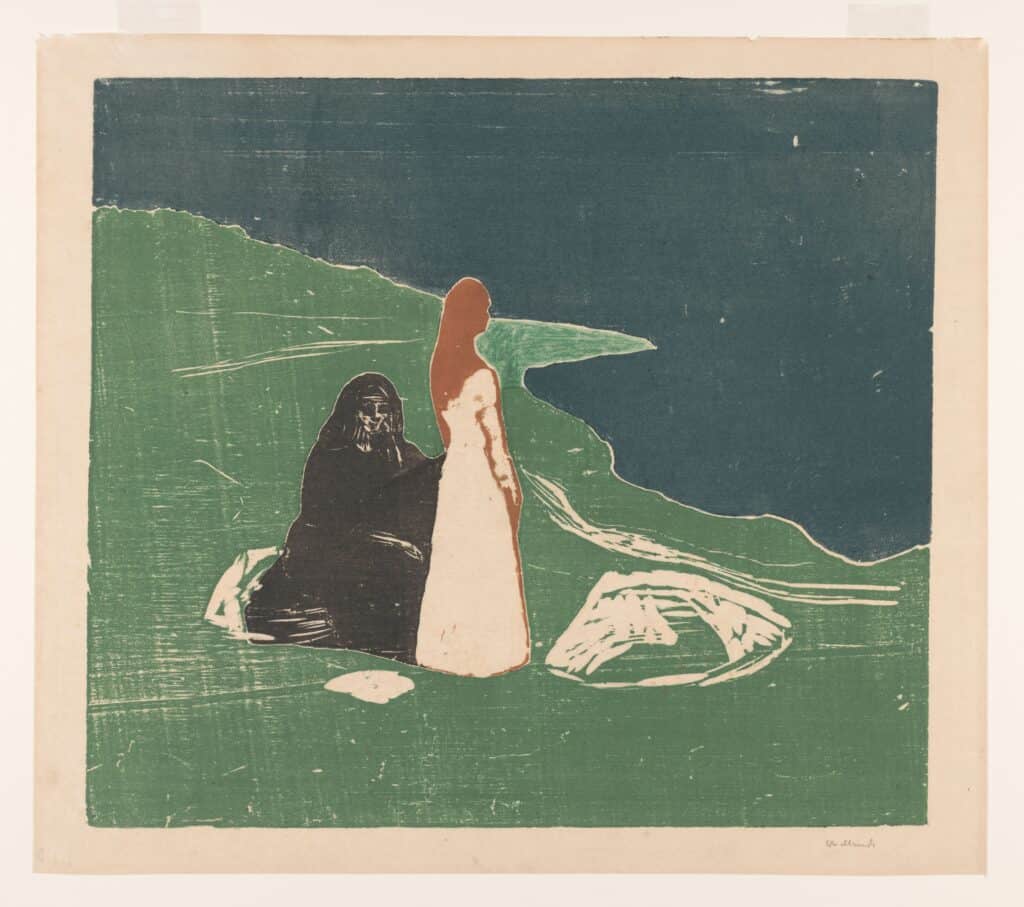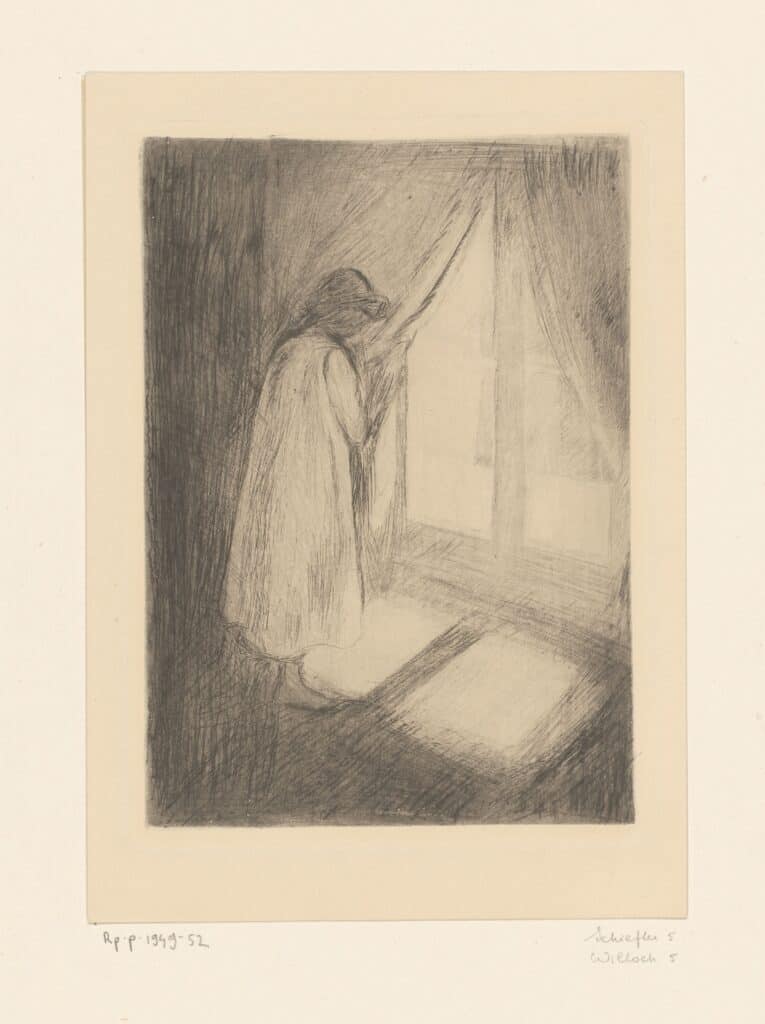In the liminal space, where the boundaries between craft and magick blur, we are invited to explore the depths of our creativity and spirituality. In this place of infinite possibility and transformation, neurodivergent individuals can find solace and liberation, embracing our unique perspectives as catalysts for innovation and evolution.

Understanding the Liminal Space:
At the heart of our exploration lies the liminal space—a dynamic and multifaceted place teeming with creative energy and spiritual significance. The liminal space is profound and enigmatic, the threshold between the known and the unknown, the tangible and the intangible. It is a place of transition and transformation, where boundaries blur and possibilities abound.
Neurodivergence and Perception of the Liminal Space:
For neurodivergent individuals, the liminal space may take on a unique significance. Neurodivergence can amplify our perception of this threshold, allowing for a deeper understanding and appreciation of its transformative power. The heightened sensitivity, divergent thought patterns, and unconventional perspectives inherent in neurodivergence may enable us to perceive the subtle nuances and intricacies of the liminal space in ways that others may not.
4 Practices that Help When Exploring the Transformative Potential:
The liminal space holds immense transformative potential, offering a fertile ground for personal growth, healing, and spiritual evolution. To fully harness this potential, it is essential to engage in introspective exercises and reflective practices that deepen our relationship with the liminal space. Here are some suggestions for exploring your own connection to the liminal:
1. Mindful Meditation: Set aside time each day for mindful meditation, allowing yourself to enter a state of deep introspection and awareness. Notice any thoughts, feelings, or sensations that arise as you focus on the threshold between conscious and unconscious awareness.
2. Journaling: Keep a journal dedicated to your experiences and insights related to liminal spaces. Write freely and without judgment, allowing your thoughts and feelings to flow onto the page. Use prompts such as “What does the liminal space mean to me?” or “How does it influence my creative and spiritual journey?” to guide your reflections.
3. Creative Expression: Engage in artistic or creative activities that allow you to explore the liminal space in a tangible way. Whether it’s painting, drawing, writing, or crafting, express yourself freely and intuitively, allowing your subconscious mind to guide the process.
4. Dreamwork: Pay attention to your dreams and the symbols and imagery that arise during sleep. Keep a dream journal by your bedside and write down any dreams or insights upon waking. Reflect on the recurring themes and symbols, and consider how they may relate to your relationship with the liminal space.
By incorporating these practices into your daily routine, you can deepen your understanding of the liminal space and unlock its transformative potential. Remember to approach this exploration with curiosity, openness, and a willingness to embrace the unknown.
Inviting Neurodivergent Perspectives in Art:
Neurodivergent individuals can bring a wealth of unique insights and experiences to the artistic process, infusing their creations with depth, authenticity, and innovation. We can celebrate the diverse ways in which neurodivergence enriches the artistic landscape, challenging conventions and expanding the boundaries of creative expression. Here are some of the ways in which neurodivergence expands the boundaries of creative expression:
1. Alternative Perspectives: Neurodivergent individuals often perceive the world in unconventional ways, offering fresh insights and alternative perspectives that challenge conventional notions of reality. This unique viewpoint infuses their artistic creations with originality and depth, pushing the boundaries of creativity and innovation.
2. Hyperfocus and Intensity: Many neurodivergent individuals possess a heightened ability to hyperfocus on their creative endeavors, immersing themselves fully in the artistic process with an intensity that yields extraordinary results. This intense focus allows them to dive deeply into their craft, exploring new ideas and techniques with unparalleled dedication and commitment.
3. Sensory Sensitivity: Sensory sensitivities, common among neurodivergent people, can influence artistic expression in profound ways. Artists may incorporate sensory elements such as texture, color, and sound into their work, creating immersive sensory experiences that resonate deeply with audiences.
4. Nonlinear Thinking: Neurodivergence is often characterized by nonlinear thinking patterns, where ideas and connections are made in unconventional ways. This nonlinear approach to creativity encourages artists to explore uncharted territories, break free from traditional frameworks, and embrace experimentation and risk-taking in their artistic pursuits.
5. Embracing Uniqueness: Neurodivergent artists often embrace their uniqueness and celebrate their differences, challenging societal norms and expectations in the process. Through their art, they advocate for acceptance, diversity, and inclusion, fostering a more compassionate and understanding society.
Overall, neurodivergence enriches the artistic landscape by offering fresh perspectives, fostering innovation, and championing diversity and inclusion. It encourages artists to push the boundaries of creative expression, paving the way for a more vibrant, dynamic, and inclusive artistic community.
Art as a Gateway to the Magickal Plane:
For neurodivergent individuals, art serves as a sacred gateway to the unseen world, offering a profound means of connection to the unseen forces that shape our reality. We can tap into our innate magick and manifest our intentions with clarity and purpose.
Navigating Challenges Through Art and Magick:
While the liminal space offers boundless potential for growth and transformation, it also presents unique challenges for neurodivergent individuals. Navigating the challenges of the liminal space can be daunting, especially for neurodiverse individuals. However, with the right strategies and support, it’s possible to navigate these challenges with resilience and grace. Here are some practical tips and support mechanisms for neurodiverse artists:
Establish Routine and Structure: Creating a structured routine can provide stability and predictability in the face of uncertainty. Set aside specific times for creative expression, self-care activities, and relaxation, ensuring a balanced approach to navigating the liminal space.
Seek Support Networks: Surround yourself with a supportive community of peers, mentors, and allies who understand and validate your experiences as a neurodiverse individual navigating the liminal space. Online support groups, forums, and social media communities can provide invaluable support and encouragement.
Set Realistic Goals: Break down larger goals into smaller, manageable tasks to avoid feeling overwhelmed by the challenges of the liminal space. Set realistic expectations for yourself and celebrate your achievements, no matter how small, as you progress towards your goals.
Embrace Self-Compassion: Practice self-compassion and self-care as you navigate the complexities of the liminal space. Be kind and gentle with yourself, acknowledging your strengths and limitations, and allowing yourself grace during times of struggle or uncertainty.
Develop Coping Strategies: Identify coping strategies that work best for you and incorporate them into your toolkit for navigating the liminal space. Whether it’s engaging in creative outlets, spending time in nature, or seeking professional support, having a variety of coping strategies can help you effectively manage challenges as they arise.
Advocate for Accommodations: Advocate for accommodations and support services that meet your unique needs as a neurodiverse individual. Whether it’s requesting sensory-friendly environments, flexible work arrangements, or access to therapy and counseling services, advocating for accommodations can empower you to navigate the liminal space with greater ease and confidence. While it can be exhausting to self-advocate, remember that you are not just making things better for yourself but for all those who follow you.
By implementing these practical strategies and seeking out the necessary support, neurodiverse people can navigate the challenges of the liminal space with resilience and grace, embracing the transformative journey with confidence and empowerment.
From cultivating mindfulness practices to incorporating sensory-friendly techniques into artistic and magickal rituals, we empower neurodivergent artists to embrace liminality with confidence and power.
Creating Inclusive Magickal Communities:
Inclusive magickal communities that honor and celebrate neurodivergent perspectives recognize the unique contributions and experiences of neurodiverse individuals within the realm of magick and mysticism. These communities play a crucial role in providing a supportive and nurturing environment for neurodivergent individuals to explore their creativity and spiritual gifts. Here’s how:
1. Recognizing Diversity: Inclusive magickal communities recognize and celebrate the diversity of neurodivergent perspectives, understanding that there is no one-size-fits-all approach to magick and spirituality. By embracing the unique strengths and challenges of neurodivergent individuals, these communities create space for diverse expressions of magick and mysticism.
2. Promoting Accessibility: Inclusive magickal communities prioritize accessibility and inclusivity, ensuring that all individuals, regardless of neurodivergence, have equal access to resources, events, and activities. This may involve providing sensory-friendly environments, offering accommodations for individuals with disabilities, and utilizing inclusive language and communication practices.
3. Fostering Empowerment: These communities empower neurodivergent individuals to embrace their creativity and spiritual gifts, providing opportunities for self-expression, exploration, and personal growth. By fostering a culture of acceptance and encouragement, they create a safe space where individuals feel empowered to explore their unique magickal practices and experiences.
4. Encouraging Collaboration: Interactive discussions and collaborative projects play a key role in building networks of support and camaraderie within inclusive magickal communities. These activities provide opportunities for participants to share their knowledge, experiences, and perspectives, fostering a sense of belonging and connection among all practitioners. By amplifying the voices of all participants, these discussions and projects create a more inclusive and diverse community.
5. Embracing Diversity: Inclusive magickal communities embrace diversity in all its forms, recognizing that each individual brings their own unique background, experiences, and perspectives to the table. By celebrating this diversity and encouraging openness and acceptance, these communities create an environment where everyone feels valued and respected for who they are.
Overall, fostering inclusive magickal communities that honor and celebrate neurodivergent perspectives is essential for creating a supportive and nurturing environment where individuals can explore their creativity and spiritual gifts with confidence and empowerment. Through interactive discussions, collaborative projects, and a commitment to diversity and inclusivity, these communities provide a space where all practitioners can thrive and grow on their magickal journey.

Conclusion:
May we continue to honor and celebrate the unique perspectives of neurodivergent magick practitioners and artists, recognizing their essential role in shaping our collective journey of discovery and growth. Together, let us embrace the magick of the liminal space as a source of inspiration, empowerment, and transformation in both our artistic and spiritual endeavors.
I’m a Creativity Coach. Can I help?
As a creativity coach specializing in guiding neurodivergent individuals, I offer personalized support and guidance to help you navigate the complexities of the liminal space. Through individualized coaching sessions, we’ll explore strategies for unlocking your creative potential, navigating challenges, and harnessing the transformative power of art and magick. Together, we’ll embark on a journey of self-discovery, healing, and growth, empowering you to embrace your neurodivergent perspective and thrive in both artistic and mystical realms.
This blog features art by artists who are thought to have been neurodiverse. If you’re an artist on the spectrum who would like your art featured, please reach out.